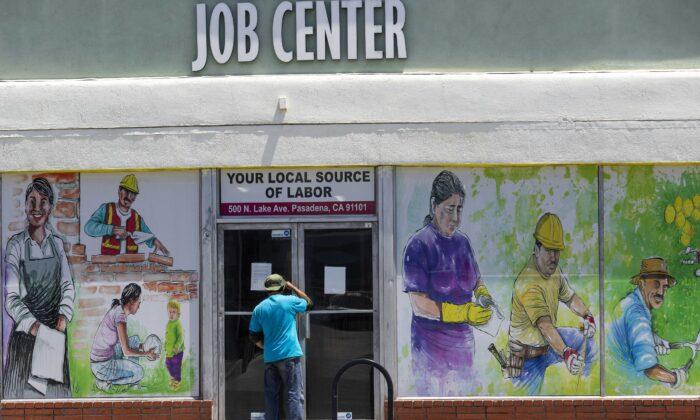WASHINGTON—The number of Americans applying for unemployment benefits edged higher last week to 745,000, a sign that many employers continue to cut jobs despite a drop in confirmed viral infections and evidence that the overall economy is improving.
The March 4 report from the Labor Department showed that jobless claims rose by 9,000 from the previous week. Though the pace of layoffs has eased since the year began, they remain high by historical standards. Before the virus flattened the U.S. economy a year ago, applications for unemployment aid had never topped 700,000 in any week, even during the Great Recession.
All told, 4.3 million Americans are receiving traditional state unemployment benefits. Counting supplemental federal unemployment programs that were established to soften the economic damage from the virus, an estimated 18 million people are collecting some form of jobless aid.
Restrictions on businesses and the reluctance of many Americans to shop, travel, dine out, or attend mass events have weighed persistently on the job market. Job growth averaged a meager 29,000 a month from November 2020 through January, and the nation still has nearly 10 million fewer jobs than it did in February 2020. Though the unemployment rate was 6.3 percent in January, a broader measure that includes people who have given up on their job searches is closer to 10 percent.
The data firm Womply reports that 64 percent of movie theaters and other entertainment venues, 40 percent of bars, and 34 percent of hair salons and beauty shops are closed. And on March 3, the Federal Reserve reported that across the country, “overall conditions in the leisure and hospitality sector continued to be restrained by ongoing COVID-19 restrictions.”
On March 5, though, economists have forecast that the government will report a strong job gain for February of near 200,000, which would raise hopes that layoffs will slow. Many analysts foresee the economy expanding at an annual rate of at least 5 percent in the current quarter and 7 percent for all of 2021.
Already, crucial sectors of the economy are showing signs of picking up as vaccinations increase, federal aid spreads through the economy, and the Fed’s low-rate policies fuel borrowing and spending. Last month, America’s consumers bounced back from months of retrenchment to step up their spending by 2.4 percent—the sharpest increase in seven months and a sign that the economy may be poised to sustain a recovery.
At the same time, rising bond yields in the financial markets are pointing to worries that higher inflation could be on the way as the economy recovers. This week, Lael Brainard, a member of the Fed’s Board of Governors, sought to calm investors by stressing that the Fed, while generally optimistic in its outlook, is still a long way off from raising interest rates or otherwise lessening its support for the economy.






Friends Read Free